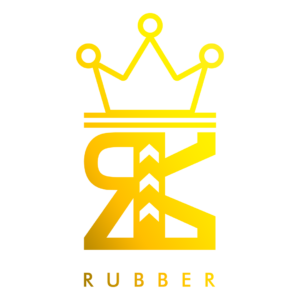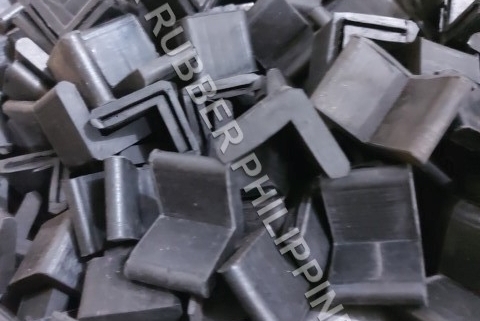Rubber Footing
Rubber Footing Types & Applications
Rubber footings come in various types and are utilized in various applications across commercial, industrial, automotive, aerospace, pharmaceutical, and residential sectors. Different applications require specific rubber compounds tailored to their needs. Installation methods vary, including push-in footings, threaded, unthreaded footings, magnetic rubber footings, adhesive footings, and tack footings. Customized solutions are available based on industry standards to meet diverse requirements efficiently. Adhesive footings offer stability in construction projects, while push-in footings are easy to install and prevent equipment from damaging floors. Magnetic rubber footings provide both strength and flexibility, which is ideal for stabilizing structures and equipment. Tack footings are suitable for fiberboard, wood, and plastic equipment, offering easy installation using a hammer. Threaded and unthreaded footings absorb shock and prevent ground damage for heavy equipment. Rubber footings deliver reliable performance across a broad spectrum of applications by adhering to industry standards.
Key Points
- A rubber footing manufacturer in the Philippines offers customized solutions for diverse industries, ensuring equipment stability and noise reduction.
- Local manufacturers provide a range of installation options, including push-in, threaded, and adhesive footings, to cater to specific application needs.
- Filipino manufacturers select high-performance compounds like SBR, natural rubber, and silicone to ensure durability and performance in demanding environments.
- By partnering with a local manufacturer, businesses can reduce equipment failure risks, absorb shock and vibrations, and extend equipment lifespan.
- Philippine-based manufacturers prioritize eco-friendly practices, innovative designs, and adherence to industry standards to deliver high-quality rubber footings.
Rubber Footing Types and Applications
Various types of rubber footings are designed to cater to diverse applications across commercial, industrial, automotive, aerospace, pharmaceutical, and residential sectors, each requiring specific rubber compounds tailored to their unique needs. The installation methods vary, including push-in footings, threaded, unthreaded footings, magnetic rubber footings, adhesive footings, and tack footings. Each type is crafted to deliver exceptional durability, ensuring reliable performance in their respective applications.
Noise reduction benefits are a hallmark of rubber footings, making them an ideal solution for industries where sound levels need to be minimized. The vibration absorption properties of these footings also play an essential role in safeguarding equipment from damage and wear. By selecting the right rubber compound, manufacturers can create customized solutions that meet the specific demands of their industry.
From heavy machinery to delicate instruments, rubber footings provide a stable foundation, reducing the risk of equipment failure and promoting a quieter operational environment. With their ability to absorb shock and vibrations, rubber footings are an integral component in various industries, ensuring the longevity and efficiency of equipment.
Advantages of Using Rubber Footings
Rubber footings offer a multitude of benefits, including their ability to protect equipment, absorb vibration, and reduce noise levels, making them an indispensable component in various industrial and residential applications. By creating a seal between machinery and its resting surface, rubber footings prevent vibration and noise, safeguarding equipment from wear and tear. This, in turn, enhances equipment stability and guarantees a quieter operational environment.
The technology behind rubber footings focuses on materials like SBR, natural rubber, synthetic rubber, EPDM, and silicone, which are known for their vibration absorption, noise reduction, and friction resistance properties. Installation of rubber footings is straightforward, with options ranging from adhesive footings to threaded and unthreaded footings catering to various equipment needs. Overall, the advantages of rubber footings lie in their protective capabilities, enhancing equipment stability and ensuring a quieter operational environment across different industrial and residential settings. By utilizing rubber footings, industries can optimize their operations, maintain a safe working environment, and extend the lifespan of their equipment.
Importance in Manufacturing Processes
In manufacturing processes, rubber footings play an essential role in ensuring equipment stability and operational efficiency by reducing vibration, preventing sliding, and protecting floors from damage. By absorbing shock and vibration, rubber footings safeguard heavy machinery and delicate instruments from wear and tear, thereby extending their lifespan. This, in turn, leads to improved operational efficiency, reduced downtime, and increased productivity.
Rubber footings also create a seal between machinery and surfaces, reducing noise levels and friction resistance. This results in a quieter operational environment, which is essential for industries that require precision and accuracy. Additionally, rubber footings prevent equipment from sliding or moving during operation, ensuring accurate results and reducing the risk of accidents.
Key Materials Used in Production
A range of high-performance compounds, including SBR, natural rubber, synthetic rubber, EPDM, and silicone, are strategically selected for rubber footing production to guarantee durability and functionality in diverse industrial applications. The material selection process is essential in ensuring that the final product meets the required standards and specifications. By choosing the right compounds, manufacturers can tailor the rubber footings to specific application requirements, thereby enhancing their performance and lifespan.
In addition to material selection, production techniques also play a critical role in determining the quality of rubber footings. Manufacturers employ innovative designs and production methods to enhance the performance of rubber footings, meeting industry standards and market trends. Moreover, environmental sustainability is a key consideration in the production process, with manufacturers prioritizing eco-friendly practices to minimize the environmental impact of the materials used.
Manufacturing Process of Rubber Footings
From sourcing natural rubber latex to the final trimming and polishing, the manufacturing process of rubber footings involves a series of precise steps. The process commences with the collection of natural rubber latex from rubber trees, which is then processed and mixed with various additives to achieve the desired consistency and properties for the rubber footing. The mixture is poured into molds and heated until it solidifies. Once cured, the rubber footing is removed from the mold and undergoes trimming and polishing to create a smooth, finished surface.
Throughout the manufacturing process, rubber footing design innovations are incorporated to cater to diverse industrial applications. Environmental impact considerations are also taken into account, ensuring that the production process adheres to eco-friendly practices. In addition, market trends in rubber footing technology are closely monitored to stay ahead of the curve and deliver high-quality products that meet industry standards. By combining cutting-edge technology with sustainable practices, rubber footing manufacturers can produce durable and efficient products that cater to the needs of various industries.
Customized Rubber Footings for Industries
RK Rubber Enterprise Co. specializes in designing and manufacturing customized rubber footings that cater to the unique requirements of various industries, ensuring peak performance and longevity of equipment across multiple sectors.
Our customized rubber footings provide:
- Industrial stability through vibration absorption and noise reduction, ensuring best equipment performance
- Tailored solutions suited to specific industry needs, guaranteeing a perfect fit for diverse equipment types
- Equipment protection from wear and tear, damage, and corrosion, extending the lifespan of valuable machinery
Why Choose RK Rubber Enterprise Co.
With a proven track record of delivering high-quality rubber footings that meet specific industry needs, RK Rubber Enterprise Co. stands out as a reliable partner for businesses seeking to optimize their equipment performance and longevity. By offering customized solutions tailored to individual industry requirements, RK Rubber Enterprise Co. guarantees that its rubber footings provide superior stability and performance. This commitment to excellence is backed by innovative technology that enables the company to develop rubber compounds that meet the unique demands of various applications.
RK Rubber Enterprise Co.’s expertise in rubber footing production enables it to cater to a broad range of industries, from industrial and automotive to aerospace and residential. By leveraging its knowledge of different materials, including SBR, natural, synthetic, EPDM, and silicone, the company can create customized rubber footings that address specific equipment needs. With a focus on delivering superior stability, noise reduction, and vibration absorption, RK Rubber Enterprise Co. is the go-to partner for businesses seeking to enhance their equipment performance and longevity.
Frequently Asked Questions
What Is the Typical Lifespan of a Rubber Footing in Industrial Use?
The typical lifespan of a rubber footing in industrial use depends on factors such as impact resistance, chemical exposure, and load capacity, with most lasting 5-10 years, but some up to 20 years with proper maintenance and installation.
Are Rubber Footings Resistant to Extreme Temperatures?
Rubber footings exhibit temperature resistance, ensuring durability in extreme environmental conditions, while also offering moisture resistance. Regular maintenance and inspection are essential to extend lifespan, with replacement frequency dependent on usage and environmental factors.
Can Rubber Footings Be Used in Wet or Humid Environments?
Rubber footings can be used in wet or humid environments, offering slip resistance and durability. A cost-effective installation process and eco-friendly materials guarantee minimal environmental impact, promoting sustainability in various industrial applications.
Do Rubber Footings Require Regular Maintenance or Replacement?
Rubber footings require minimal maintenance, ensuring cost-effective solutions and durability. Regular cleaning and inspection can prevent common issues, while sustainable production methods minimize environmental impact, providing long-term benefits and reduced replacement needs.
Are Rubber Footings Compatible With All Types of Machinery and Equipment?
Rubber footings are compatible with most machinery and equipment, thanks to their durable material composition and adaptable installation processes, ensuring peak performance under heavy loads and vibration resistance.
Conclusion
To sum up, the rubber footing manufacturer in the Philippines has established itself as a dependable provider of high-quality products, catering to diverse industrial needs. The manufacturer guarantees long-lasting and efficient rubber footings that meet industry standards by combining innovative production techniques with sustainable practices. With a focus on quality, sustainability, and customization, the manufacturer’s products effectively safeguard equipment, absorb vibration, and reduce noise levels, ultimately enhancing operational stability.

